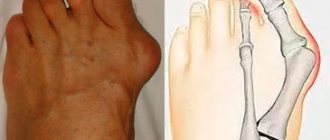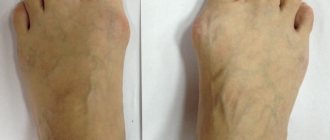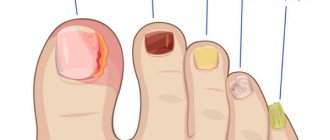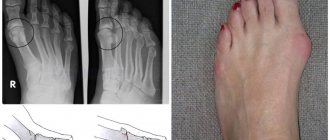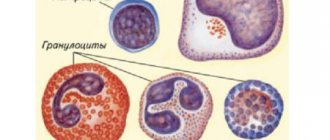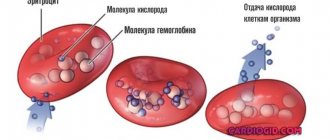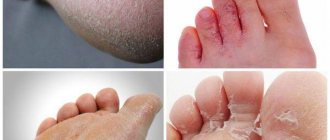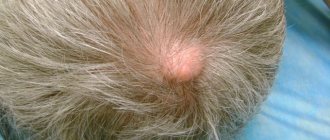Among all orthopedic disorders in children, the most common is planovalgus foot deformity. If it is not possible to correct the foot deformity in a timely manner using conservative methods, it is important to undergo surgery before the child reaches 16–17 years of age. At a later age, it becomes more difficult to completely correct the disorder, and the likelihood of complications due to disruption of the articular axis increases sharply. This can make it very difficult to carry out daily activities and even walk.
What is planovalgus foot in children?
Plano-valgus foot deformity means a decrease in the height of the arches of the foot and a violation of the articular axis, as a result of which the child’s legs acquire an X-shape over time. At the same time, the presence of curvature of the ankles is indicated when, when the knees are tightly compressed in a standing position, the distance between the inner surfaces of the ankles exceeds 4-5 cm. Thus, with this orthopedic disorder, the foot rolls inward, which causes the heel and outer toes to deviate outward.
Sometimes both legs are deformed to the same extent, but more often one is more tilted inward. It is important to understand that all children have flat feet from birth and this is normal. Natural arches begin to form when the child stands on his feet and begins to take his first steps. Gradually they are strengthened naturally, and the foot is formed correctly. But if a child constantly walks on flat surfaces, for example, linoleum, laminate, parquet, tiles, etc., this impedes the development of muscles and ligaments. As a result, a flat-valgus foot occurs, especially if there are prerequisites. The situation is aggravated by choosing inappropriate shoes.
Distal osteotomy
The most common surgical method for correcting hallux valgus deformity is distal osteotomy. The operation takes place in several stages:
Get an online consultation
right now.
Get
First stage
Exostoexotomy or removal of the “bone”. In untreated cases, this stage may be the only one. Through a small skin incision or even without an incision, endoscopically, the exostosis itself (bone) and the inflamed joint capsule are removed.
Second phase.
Remote osteotomy. Using an artificial fracture, the position of the first metatarsal bone is leveled. The fracture site is secured with titanium screws. They are removed a month later, after the bone has completely healed.
Third stage.
Dissection of the muscle responsible for abducting the thumb.
Fourth and final stage.
Securing the thumb in a physiological position.
Causes
This type of deformity in children can be congenital or acquired during life. In the first case, it becomes a consequence of the occurrence of intrauterine developmental disorders of the bones of the foot. In this case, it is usually diagnosed during the first months of life during preventive examinations of the infant.
Acquired flat-valgus foot in children occurs against the background of weakness of the muscles and tendon-ligamentous apparatus and the occurrence of disturbances in the development of the musculoskeletal system.
Most often, plano-valgus foot deformity is observed in children:
- with muscle hypotonia;
- premature;
- those suffering from intrauterine hypotrophy, i.e., lack of body weight;
- having congenital weakness of connective tissue;
- weakened, often suffering from acute respiratory diseases, bronchitis, pneumonia at an early age;
- with diagnosed rickets;
- with neuromuscular diseases, including cerebral palsy, polyneuropathy, myodystrophy, poliomyelitis;
- having excess weight;
- those who have suffered injuries to the ligaments, muscles, bones of the foot and lower leg;
- with dysplasia or congenital dislocation of the hip joint.
Particularly noteworthy are the causes of flat-valgus feet in children, such as early standing of the infant, especially in a walker, and incorrect selection of shoes. Even in children without significant prerequisites for foot deformation, the foot can become flattened and fall inward. In the first case, this is due to the fact that the muscles and ligaments are not yet able to cope with the sharply increased load on them due to early standing on their feet and are stretched, while the arch of the foot remains flat. In the second case, shoes that are too soft or do not support the foot well cannot provide adequate support to the foot that is just beginning to form and leads to it falling inward. As a result, the ankle joint gradually shifts inward and the formation of an X-shaped deformity of the legs.
The first signs of acquired planovalgus deformity can be noticed during the first years of life, when the child begins to actively walk and run. However, they can also occur at a later age.
Cost of surgery to remove hallux valgus
The doctor calculates the exact cost of the operation. It is very difficult to name a specific figure - it varies from twenty to eighty thousand rubles. This depends on the type of surgical intervention chosen by the attending physician (in accordance with the stage of the disease and physiological characteristics of the patient), the type of anesthesia, outpatient or inpatient stay, materials and instruments used. To keep the price low, come get rid of hallux valgus in a timely manner, on an outpatient basis, using minimally invasive intervention.
Symptoms
In addition to the outwardly noticeable incorrect positioning of the feet with plano-valgus deformity, other manifestations of the disorder may be observed in children. This is due to the fact that deviations from the norm in the configuration of the foot lead to changes in the articular axis. As a result, the load on the joints of the lower extremities is distributed incorrectly, which leads to the following symptoms:
- uncertainty, clumsiness of gait, frequent falls when walking and especially running;
- shuffling when walking;
- rapid fatigue of the child, which is especially noticeable when playing with peers;
- pain in the legs and back that occurs after short physical activity and walking;
- curvature of the legs with the formation of an X-shaped deformity;
- cramps and swelling of the legs, which is not always observed.
With plano-valgus deformity of the feet, children do not step on the entire foot, but mainly on its inner edge. This will be confirmed by shoes, upon inspection of which uneven wear will be noticeable, namely the greatest abrasion along the inner surface.
Prognosis and likelihood of cure
The sooner you go to the clinic, the faster and more effectively it is possible to correct all problems. When diagnosed within a year, the probability of eliminating the defect is almost one hundred percent.
If the abnormal development is detected late or treatment is refused, problems with the spine (scoliosis, osteochondrosis), arthritis, and joint dysfunction are guaranteed. Everything can be cured only in childhood.
Degrees of hallux valgus in children
Depending on the severity of the deviation, the following degrees of hallux valgus in a child are distinguished:
- 1st degree – the angle of deviation from the norm is 10-15°;
- 2nd degree – the angle is within 15-20°;
- 3 degree – curvature is 20-30°;
- 4th degree – the foot deviates from the normal position by more than 30°.
In addition, with planovalgus deformity, flat feet are also observed, which can also be of varying degrees of severity. It is determined by the angle of the longitudinal arch of the foot. Thus, during the plano-valgus deformity the following stages can be distinguished:
- 1 – the angle of the arch of the foot is 130-140°, and the valgus deviation of the heel bone is 5-10°;
- 2 – the angle of the arch of the foot is in the range of 141–160°, and the valgus deviation of the heel bone is 10–15°;
- 3 – the angle of the arch of the foot is 161-180°, and the valgus deviation of the heel bone is more than 15°.
Since the feet are the only supporting point of the human body, the health of the entire musculoskeletal system largely depends on the correctness of their anatomy. Therefore, in the absence of competent treatment to eliminate plano-valgus foot deformity, children subsequently develop pathological changes in the remaining joints of the lower extremities and even the spine. As a result, you may experience:
- pain in the ankle, knee and hip joints;
- back pain, most often in the lower back;
- curvature of the spine with the formation of a scoliotic arch;
- persistent pain when walking in the area of the 3rd interdigital space;
- formation of heel spurs;
- hallux valgus deformity of the 1st toe, etc.
Deformation of the feet in children can reach severe degrees, which will lead not only to a cosmetic defect, but can even cause disability at a young age. Therefore, it is extremely important to pay attention to the signs of flat-valgus foot in children in a timely manner, get advice from an orthopedist and then strictly follow the recommendations received from him.
With this approach, there is a high probability of complete restoration of the normal supporting function of the foot, elimination of discomfort in the legs and prerequisites for the development of complications. But the more severe the deformity, the more difficult and lengthy the treatment will be, and sometimes it will require further surgical intervention. Therefore, you should not hope that foot problems will disappear on their own. It is better to consult an orthopedist at the first suspicion of abnormalities.
Diagnostics
Usually, the first signs of changes in the condition of children's feet are discovered by parents or a pediatrician during a preventive examination. However, to accurately confirm the diagnosis and prescribe treatment, you should consult an orthopedist. The doctor will conduct an examination, during which he will pay attention to the deviation of the toes and heels to the outside, the smoothing of the natural arches of the foot, and the displacement of the inner part inward. These data are usually sufficient to diagnose a child with a planovalgus foot. But in order to determine the degree of deformation and develop the most effective treatment tactics for a particular child, a comprehensive examination of the feet should be carried out, which may include:
- radiography of the feet, performed in 3 projections, which allows you to evaluate changes in the position of the feet relative to each other;
- computer plantography is a modern method for diagnosing deviations from the norm in the condition of the feet, which allows you to accurately calculate various morphological parameters, on the basis of which you can then create individual orthopedic insoles;
- podometry is a diagnostic method that makes it possible to accurately assess the nature of the load distribution on different parts of the foot and even detect pathological changes that have not yet manifested themselves externally;
- Ultrasound of the joints is a simple and accessible method, thanks to which you can assess the condition of the joints of the lower extremities and detect changes in them caused by foot deformation that require correction.
Thus, diagnosing feet for suspected planovalgus deformity in children does not require any painful or unsafe procedures and can be performed in the shortest possible time.
In order to exclude pathologies of the central and peripheral nervous system, children are advised to consult a neurologist.
Definition
In medical science, this pathology is called a defect of the arches, in which they are located in a cruciform state in the form of the letter X. Orthopedists discover this when they look at the heels and toes - they are turned outward. If you put your legs straight and press them together, the distance between your ankles will be more than 4 centimeters, your knees seem to be pointing in different directions. This is the most common problem that parents come to doctors with.
It is discovered when they learn to walk, that is, before the age of one year. When walking, the baby relies on the inner part - the sphenoid bones. The steps themselves turn out to be hesitant, and the child, even before he has started, is often capricious and does not want to walk anymore.
Treatment
Based on the research results obtained, the orthopedist develops an individual program for the conservative treatment of planovalgus foot in a child. Since the foot continues to develop up to 12 years of age and remains quite plastic, until this period treatment involves the use of only conservative methods. In most cases, with the correct selection of means and strict adherence to the recommendations of the orthopedist, up to this age it is possible to completely restore the normal shape and function of the foot, or at least significantly bring them closer to normal, as well as strengthen the muscular and ligamentous apparatus.
Conservative treatment of flat valgus foot in children is always complex and may include the following measures:
- selection and constant wearing of orthopedic shoes, including at home using individually made orthopedic insoles;
- massage of the feet, as well as the lower extremities, and sometimes the lower back;
- physiotherapy;
- Exercise therapy.
If indicated, children may be prescribed foot immobilization by applying a plaster cast.
If, by the age of 12 years, conservative methods have not been used to eliminate planovalgus deformity of the foot, which is observed in less than 7% of cases, the issue of surgical intervention is considered. If indicated, it is important to perform it before the child turns 16-17 years old.
Orthopedic shoes and insoles
Orthopedic shoes are the basis for the treatment of plano-valgus foot deformity. You will definitely need to buy it, and you will need 2 pairs: for the street and for the house.
Distinctive features of proper orthopedic shoes are:
- high-quality, elastic instep support;
- a hard, high, fixed heel that will tightly grip the ankle joint and ensure it remains in the correct position;
- Thomas heel, the inner part of which is 1.5 times longer than the outer part;
- dense side part;
- the presence of at least 3 convenient fasteners;
- dense, elastic sole;
- widened bow;
- naturalness of all materials in contact with the foot.
In some cases, the orthopedist may limit himself to prescribing individual orthopedic insoles, which will take into account the structural features of the right and left feet separately and compensate for existing deficiencies. They will need to be put into the shoes instead of the insoles that come with them.
Massage
For flat-valgus feet, massage is an essential component of treatment. Moreover, if to prevent the formation of this type of deformity, the usual techniques of stroking and rubbing, which every parent can master, are sufficient, then if you already have valgus, it is recommended to visit the office of a professional massage therapist at least several times. The doctor will show you what techniques should be used to strengthen the muscles and ligaments of the foot and lower leg, and improve the quality of blood circulation in the lower extremities. After just a few sessions of observing the professional actions of a specialist, parents usually fully master the proposed techniques and can massage the child themselves.
For flat-valgus feet, the following is usually indicated:
- stroking, kneading the feet;
- providing a light vibration effect on certain areas;
- tapping on the legs alternating with stroking;
- massaging the toes and ankle joints with rotational movements, including those involving the knee joint;
- massaging the heels and supporting area of the foot in the area of the metatarsophalangeal joints;
- light kneading of the front and back surfaces of the thighs, buttocks, lower back, avoiding impact on the spine.
After completing the massage session, foot baths will help enhance its effect.
It is very useful to buy a special massage mat with different types of irregularities or make it yourself using pillows filled with chestnuts, peas, buckwheat, beans, sand and other objects of different sizes. Walking on such a mat will neutralize the negative impact of walking on a flat surface and actively promote the proper development of muscles, ligaments of the foot and the formation of arches. In this case, children under 3 years old should choose products with a protrusion height of up to 2 cm, and older ones - up to 3 cm.
It is useful to simply walk barefoot on such a massage mat, stand, shift from foot to foot, slide one foot along the mat, and also rise on your toes and lower on your heels.
Exercise therapy
Since weakness of the muscular system plays a large role in the formation of flat-valgus foot in children, exercise therapy plays a significant role in combating this. For each child, the exercise complex is selected individually, taking into account his age, as well as the severity of the deformity. As a rule, they are simple and can be performed under parental supervision at home. But you should do therapeutic exercises every day, and its effectiveness depends not on the number of exercises, but on the regularity of their implementation.
The most commonly prescribed exercises include:
- alternate walking on the inside and outside of the foot;
- rolling the feet of a rolling pin;
- grasping and lifting small objects with the toes (when working with young children, you should monitor them very carefully, preventing attempts to put a small object in the mouth or nose);
- crushing a newspaper sheet or towel with your toes;
- thumb painting;
- performing rotational movements with the foot;
- run the toe along the shin, as if clasping it with your toes;
- lift your toes slightly turned inward while standing straight.
So that the child does not resist physical therapy classes and willingly performs useful exercises for him, it is worth carrying out them in a playful way at a time when he is cheerful and in a positive mood.
In general, any physical activity has a beneficial effect on the condition of the feet: walking, outdoor games, jumping, cycling, wall climbing, rope climbing. But if the child is tired, you should not force him to be active.
In addition to exercise therapy, kinesio taping can be used. The method involves gluing special breathable elastic bands, called tapes, to the feet. They are made from hypoallergenic materials and help to correctly distribute the load on the supporting points of the foot and muscles, but only with proper gluing. With tapes you can swim, wear any shoes, run, jump and perform any other actions. On average, they are applied for 5 days, after which replacement is required.
Physiotherapy
Physiotherapeutic procedures are indicated when there is a significant angle of deviation of the foot from the normal position. But they should be considered only as an auxiliary method of treating the disease, and not the only necessary one. Thanks to properly selected physical effects, it is possible to increase the effectiveness of other measures taken, reduce the severity of pain, fatigue and swelling of the legs.
The following have a positive effect on the condition of the feet with plano-valgus deformity:
- electrophoresis;
- diadynamic therapy;
- magnetic therapy;
- electrical stimulation of the muscles of the lower leg and foot;
- paraffin therapy;
- ozokerite and mud applications;
- IRT.
Prevention
To avoid the formation of flat-valgus foot in a child, you should:
- eliminate stress on the legs for up to 7-8 months;
- Do gymnastics with your baby every day and carry out preventive massage;
- provide the child with adequate nutrition appropriate for his age;
- spend enough time outdoors;
- avoid overtiring the baby and create conditions for proper sleep;
- prevent rickets and, if necessary, give the child vitamin D supplements;
- Encourage your child to walk barefoot on sand, pebbles, grass, etc.
It is very important not only to independently monitor the child’s condition, but also not to neglect preventive examinations, not only by the pediatrician, but also by specialists. As soon as the child begins to attempt to walk, it is necessary to carefully and scrupulously choose shoes. It must exactly match the leg in size and width (extra room for growth is not allowed), have a rigid fixed back, tight instep support, and also be made of high-quality materials that allow air to pass through.
Prices
| Name of service (price list incomplete) | Price |
| Appointment (examination, consultation) with a pediatric surgeon, primary, therapeutic and diagnostic, outpatient | 1750 rub. |
| Consultation (interpretation) with analyzes from third parties | 2250 rub. |
| Prescription of treatment regimen (for up to 1 month) | 1800 rub. |
| Prescription of treatment regimen (for a period of 1 month) | 2700 rub. |
| Consultation with a candidate of medical sciences | 2500 rub. |
| Hernia repair of umbilical hernia/hernia of the white line of the abdomen, category I. difficulties | 33,000 rub. |
| Removal of condylomas, category I. difficulties | 3550 rub. |
| Removal of condylomas, category II. difficulties | 8900 rub. |
| Excision/removal of benign formations of the skin and mucous membrane, category I. difficulties | 2550 rub. |
